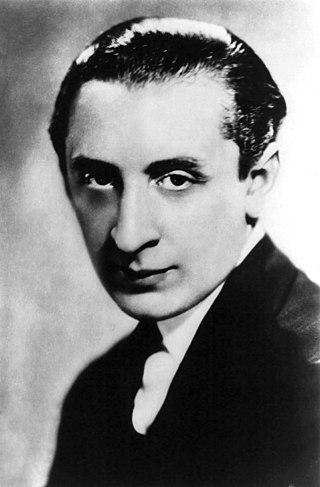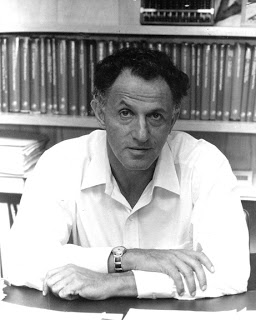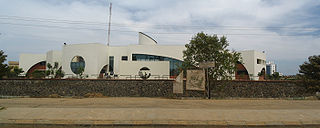
Control engineering or control systems engineering is an engineering discipline that deals with control systems, applying control theory to design equipment and systems with desired behaviors in control environments. The discipline of controls overlaps and is usually taught along with electrical engineering, chemical engineering and mechanical engineering at many institutions around the world.
Control theory is a field of control engineering and applied mathematics that deals with the control of dynamical systems in engineered processes and machines. The objective is to develop a model or algorithm governing the application of system inputs to drive the system to a desired state, while minimizing any delay, overshoot, or steady-state error and ensuring a level of control stability; often with the aim to achieve a degree of optimality.

Feedback occurs when outputs of a system are routed back as inputs as part of a chain of cause-and-effect that forms a circuit or loop. The system can then be said to feed back into itself. The notion of cause-and-effect has to be handled carefully when applied to feedback systems:
Simple causal reasoning about a feedback system is difficult because the first system influences the second and second system influences the first, leading to a circular argument. This makes reasoning based upon cause and effect tricky, and it is necessary to analyze the system as a whole. As provided by Webster, feedback in business is the transmission of evaluative or corrective information about an action, event, or process to the original or controlling source.

Vladimir Samoylovich Horowitz was a Russian and American pianist. Considered one of the greatest pianists of all time, he was known for his virtuoso technique, timbre, and the public excitement engendered by his playing.

Harry Nyquist was a Swedish-American physicist and electronic engineer who made important contributions to communication theory.

Harold Stephen Black was an American electrical engineer, who revolutionized the field of applied electronics by inventing the negative feedback amplifier in 1927. To some, his invention is considered the most important breakthrough of the twentieth century in the field of electronics, since it has a wide area of application. This is because all electronic devices are inherently nonlinear, but they can be made substantially linear with the application of negative feedback. Negative feedback works by sacrificing gain for higher linearity. By sacrificing gain, it also has an additional effect of increasing the bandwidth of the amplifier. However, a negative feedback amplifier can be unstable such that it may oscillate. Once the stability problem is solved, the negative feedback amplifier is extremely useful in the field of electronics. Black published a famous paper, Stabilized feedback amplifiers, in 1934.

Max Wertheimer was a psychologist who was one of the three founders of Gestalt psychology, along with Kurt Koffka and Wolfgang Köhler. He is known for his book, Productive Thinking, and for conceiving the phi phenomenon as part of his work in Gestalt psychology.

Richard Ernest Bellman was an American applied mathematician, who introduced dynamic programming in 1953, and made important contributions in other fields of mathematics, such as biomathematics. He founded the leading biomathematical journal Mathematical Biosciences, as well as the Journal of Mathematical Analysis and Applications.
Horowitz is a Levitical Ashkenazi surname deriving from the Horowitz family, though it can also be a non-Jewish surname as well. The name is derived from the town of Hořovice, Bohemia. Other variants of the name include Harowitz, Harowicz, Harrwitz, Harwitz, Horovitz, Horvitz, Horwicz, Horwitz, Hourwitz, Hurewicz, Hurwicz, Hurwitz, Gerovich, Gurovich, Gurevich, Gurvich, Gourevitch, Orowitz and Urwitz.

Ben Shneiderman is an American computer scientist, a Distinguished University Professor in the University of Maryland Department of Computer Science, which is part of the University of Maryland College of Computer, Mathematical, and Natural Sciences at the University of Maryland, College Park, and the founding director (1983-2000) of the University of Maryland Human-Computer Interaction Lab. He conducted fundamental research in the field of human–computer interaction, developing new ideas, methods, and tools such as the direct manipulation interface, and his eight rules of design.

The Nichols plot is a plot used in signal processing and control design, named after American engineer Nathaniel B. Nichols.
In control theory, quantitative feedback theory (QFT), developed by Isaac Horowitz, is a frequency domain technique utilising the Nichols chart (NC) in order to achieve a desired robust design over a specified region of plant uncertainty. Desired time-domain responses are translated into frequency domain tolerances, which lead to bounds on the loop transmission function. The design process is highly transparent, allowing a designer to see what trade-offs are necessary to achieve a desired performance level.

Chennai Mathematical Institute (CMI) is a higher education and research institute in Chennai, India. It was founded in 1989 by the SPIC Science Foundation, and offers undergraduate and postgraduate programmes in physics, mathematics and computer science. CMI is noted for its research in algebraic geometry, in particular in the area of moduli of bundles.
In control theory, robust control is an approach to controller design that explicitly deals with uncertainty. Robust control methods are designed to function properly provided that uncertain parameters or disturbances are found within some set. Robust methods aim to achieve robust performance and/or stability in the presence of bounded modelling errors.

Hendrik Wade Bode was an American engineer, researcher, inventor, author and scientist, of Dutch ancestry. As a pioneer of modern control theory and electronic telecommunications he revolutionized both the content and methodology of his chosen fields of research. His synergy with Claude Shannon, the father of information theory, laid the foundations for the technological convergence of the Information Age.
Karl Johan Åström is a Swedish control theorist, who has made contributions to the fields of control theory and control engineering, computer control and adaptive control. In 1965, he described a general framework of Markov decision processes with incomplete information, what ultimately led to the notion of a Partially observable Markov decision process.
Irving Louis Horowitz was an American sociologist, author, and college professor who wrote and lectured extensively in his field, and in his later years came to fear that it risked being seized by left-wing ideologues. He proposed a quantitative index for measuring a country's quality of life, and helped to popularize "Third World" as a term for the poorer nations of the Non-Aligned Movement. He was considered by many to be a neoconservative, although he maintained that he had no political adherence.
Hersh Shefrin is a Canadian economist best known for his pioneering work in behavioral finance.
Thomas Hice Budzynski was an American psychologist and a pioneer in the field of biofeedback, inventing one of the first electromyographic biofeedback training systems in the mid-1960s. In the early 1970s, he developed the Twilight Learner in collaboration with John Picchiottino. The Twilight Learner was one of the first neurotherapy systems.
Uri Shaked is an Israeli professor of Electrical Engineering in the Engineering Faculty at Tel Aviv University, specializing in control theory of uncertain systems. In 2017 he was awarded the Israel Prize for engineering research.










